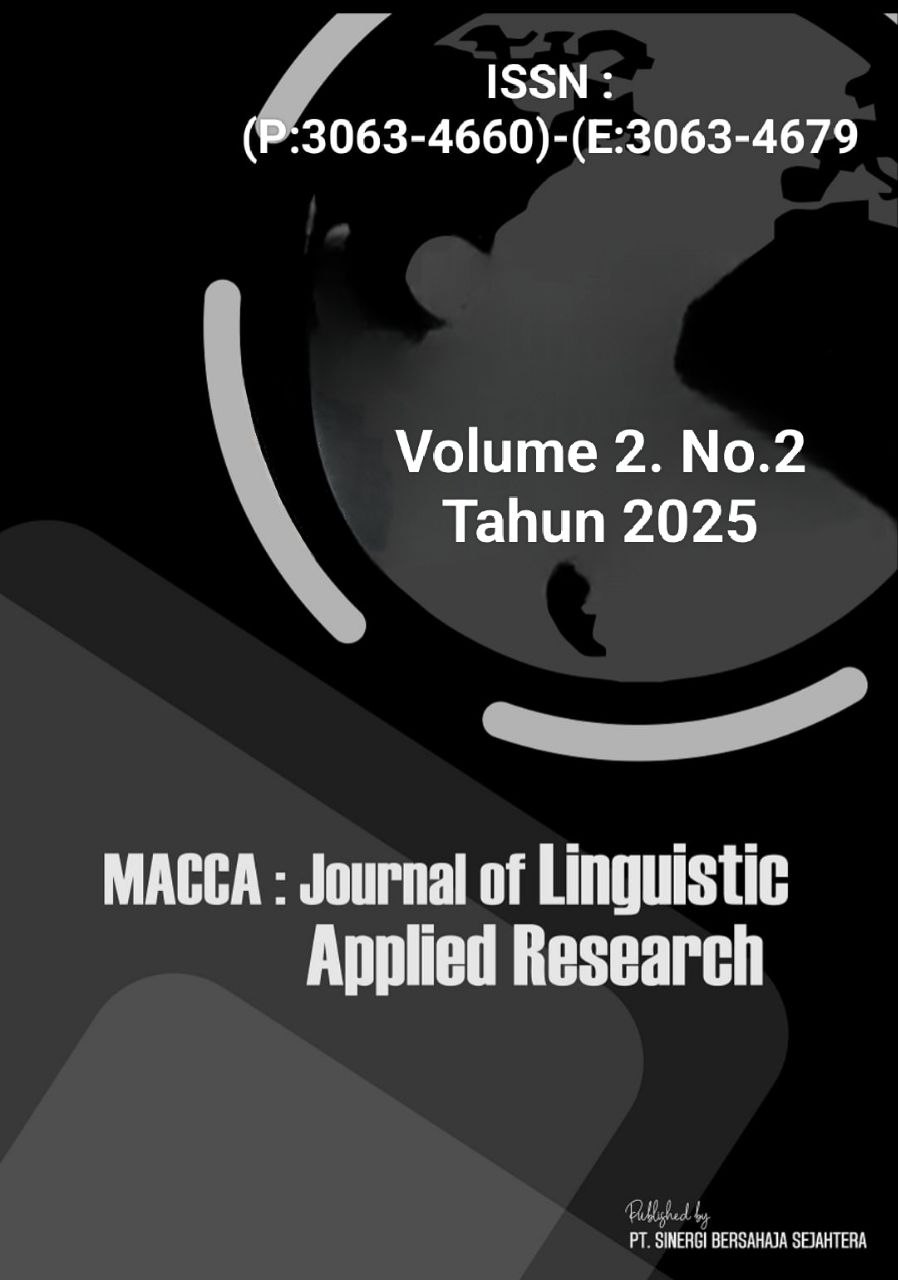Communicative Drilling as a Technique to Improve Pronunciation and Motivation among Eighth-Grade Students
Keywords:
communicative drilling, pronunciation ability, learning motivation, junior high school studentsAbstract
This study aims to investigate the effectiveness of communicative drilling as a technique to improve students’ pronunciation ability and learning motivation among eighth-grade students of SMPN 2 Metro Lampung. The research employed a pre-experimental design with a one-group pre-test and post-test. The sample consisted of 23 students selected through cluster random sampling. Data were collected through a pronunciation test and a questionnaire. The pronunciation test was administered to measure students’ ability before and after the treatment, while the questionnaire was used to assess students’ interest and motivation toward learning pronunciation using communicative drilling. The results showed that the mean score of the post-test was significantly higher than the pre-test, indicating a notable improvement in students’ pronunciation. Furthermore, the analysis of the questionnaire revealed that students demonstrated a high level of motivation and interest when learning pronunciation through communicative drilling. The findings suggest that communicative drilling is an effective and engaging technique to enhance both students’ pronunciation ability and their intrinsic motivation in learning English
References
Abdul Jalil Jum’uatullaila, Buhari, Syahrir L, & Sam Hermansyah. (2025). The Influences of Using Quizizz in Student’s English Learning Outcomes. INTERACTION: Jurnal Pendidikan Bahasa, 12(1), 1030–1040. https://doi.org/10.36232/interactionjournal.v12i1.3526
Acton, W. (1984). Changing fossilized pronunciation. TESOL Quarterly, 18(1), 71–85. https://doi.org/10.2307/3586332
Bachman, L. F. (1990). Fundamental considerations in language testing. Oxford University Press.
Brown, H. D. (2001). Teaching by principles: An interactive approach to language pedagogy (2nd ed.). Pearson Education.
Burns, A. (2003). Clearly speaking: Pronunciation in action for teachers. Macquarie University.
Celce-Murcia, M., Brinton, D. M., & Goodwin, J. (2006). Teaching pronunciation: A course book and reference guide (2nd ed.). Cambridge University Press.
Dörnyei, Z. (2001). Motivational strategies in the language classroom. Cambridge University Press.
Gilakjani, A. P. (2012). A study of factors affecting EFL learners’ English pronunciation learning and strategies for instruction. International Journal of Humanities and Social Science, 2(3), 119–128.
Handoko, K. C., & Mindari, R. (2016). Using drilling to teach pronunciation to junior high school students. Magister Scientiae Journal, 39, 46–57.
Harmer, J. (2001). The practice of English language teaching (3rd ed.). Longman.
Heaton, J. B. (1988). Writing English language tests. Longman.
Ilham, I. (2013). Increasing students’ pronunciation ability through reading aloud. Journal of English Language Teaching, 2(2), 45–55.
Kang, O. (2010). ESL learners’ attitudes toward pronunciation instruction. In J. Levis & K. LeVelle (Eds.), Proceedings of the 1st Pronunciation in Second Language Learning and Teaching Conference (pp. 105–118). Iowa State University.
Kelly, G. (2000). How to teach pronunciation. Pearson Education.
Kenworthy, J. (1987). Teaching English pronunciation. Longman.
Maharida, S. (2017). Using substitution drill technique to improve students’ pronunciation ability. Journal of English Language Teaching and Linguistics, 2(2), 123–134.
Nunan, D. (1991). Language teaching methodology: A textbook for teachers. Prentice Hall.
Pourhosein Gilakjani, A. (2016). What factors influence the English pronunciation of EFL learners? Modern Journal of Language Teaching Methods, 6(2), 314–326.
Roach, P. (2009). English phonetics and phonology: A practical course (4th ed.). Cambridge University Press.
Sam Hermansyah, & Ahmad Rizal Majid. (2025). The Use of Probing-Prompting Technique to Improve Reading Comprehension of Eighth Grade Students. INTERACTION: Jurnal Pendidikan Bahasa, 12(1), 543–556. https://doi.org/10.36232/interactionjournal.v12i1.2660
Seidlhofer, B. (1995). Pronunciation awareness: Some thoughts on pronunciation in teacher education. Speak Out! Newsletter of the IATEFL Pronunciation Special Interest Group, 6, 12–16.
Tam, C. (1997). Communicative drilling: An effective technique for teaching pronunciation. RELC Journal, 28(1), 45–60. https://doi.org/10.1177/003368829702800103
Downloads
Published
How to Cite
Issue
Section
License
Copyright (c) 2025 jimmy cromico

This work is licensed under a Creative Commons Attribution-ShareAlike 4.0 International License.



































